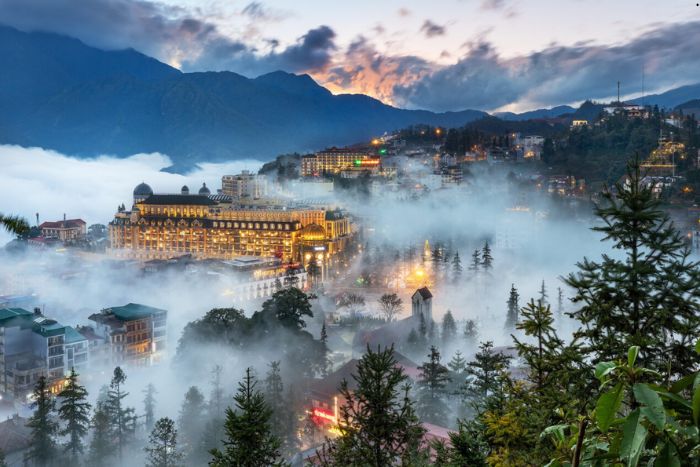Sapa, perched at 1,600 meters in Vietnam’s northwest, is a world apart from the country’s tropical lowlands. Surrounded by the Hoang Lien Son mountains, this former French hill station offers crisp air, rolling mists, and jaw-dropping views of terraced rice fields that cascade like green waves. Home to ethnic minority groups like the Hmong, Dao, and Tay, Sapa is as culturally rich as it is scenic. The town’s bustling market is a kaleidoscope of color—women in indigo-dyed Hmong skirts or Dao headscarves sell embroidered textiles, silver jewelry, and fresh mountain produce.

Trekking is Sapa’s heartbeat. Trails range from gentle walks to multi-day adventures, leading through villages like Lao Chai and Ta Van, where rice paddies glow gold during the September-October harvest. A local guide—often a Hmong woman in traditional dress—shares stories of her culture, from rice farming to herbal medicine. For a challenge, summit Fansipan, Vietnam’s highest peak at 3,143 meters, nicknamed the “Roof of Indochina.” A cable car offers a quicker ascent, rewarding you with cloud-piercing views. Cat Cat Village, a short walk from town, showcases Hmong life with its wooden homes, water-powered mills, and a waterfall perfect for photos.
Homestays are a highlight—stay with a family to share meals like thit lon cap nach (smoked pork) and sip rice wine by a crackling fire. Learn to weave with the Dao or join a dyeing workshop to create indigo patterns. Sapa’s cool climate (pack layers for chilly nights) makes it ideal year-round, though spring (March-April) brings blooming orchids, and autumn offers clear skies. For downtime, sip coffee at a hilltop café overlooking the Muong Hoa Valley or browse Love Market, a Saturday tradition where young locals once courted through song. Sapa blends raw beauty with cultural depth, offering an escape that feels both adventurous and soul-stirring, as if the mountains themselves whisper their secrets to those who listen.